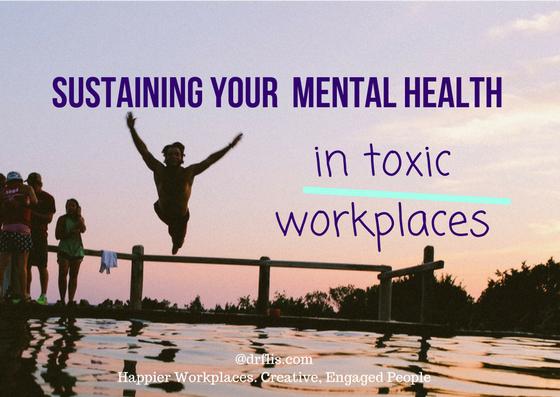 “Each of us has meaning and we bring it to life. It is a waste to be asking… [what the meaning of life is] when YOU are the answer.”
“Each of us has meaning and we bring it to life. It is a waste to be asking… [what the meaning of life is] when YOU are the answer.”
This was said by the much loved professor, Joseph Campbell, a pioneer of comparative mythology.
This sentiment is possibly more appropriate in this century, given our respective attempts to find and animate our ‘life’s purpose’.
As indicated in my January article, this drive to enliven our life’s purpose promotes an increasingly popular notion that (for most of us) work is the second most important time commitment in our lives.
In this regard, our career/work and ‘sphere of influence’ has a tremendous capacity to shape our self-value and position in our communities, and can influence our wellbeing and mental health. Indeed, some studies have revealed that, for many dealing with existing mental-health problems, the simple act of participating in a supportive workplace endows a sense of meaning while stimulating a social network.
However, allowing our work or career to define us, and how we value one another, is arguably a two edged sword. Researchers have found, for example, that highly career-oriented individuals can experience a form of disempowering ‘nothingness’ when transitioning to retirement.
Within this context, it’s therefore hardly surprising our wellbeing and mental health can be challenged, if not eroded, when unexpectedly faced with a toxic workplace that, for example, prizes results over respectful behaviours, or displays normalised (i.e., accepted) aggressive, abusive or bullying behaviours that devalue, disenfranchise and disempower.
Studies have found that continued exposure to toxic work behaviours like bullying, can reduce job satisfaction and cognitive functionality, and lead to mental health issues such as depression, PTSD, and tragically, suicide.
Within this context, the question, ‘How do I protect my well-being and mental health when dealing with a toxic workplace, disrespectful, hostile or bullying co-workers, supervisors, clients or customers?’ is more critical than ever.
Firstly, locate or create a respectful workplace culture

Yes, I know this is probably a no-brainer, yet it’s surprisingly how often people ignore this crucial step.
As indicated in my Respectful Workplace Cultures Blueprint, creating a respectful culture requires leadership, time and consistency to create the right context, content and outcomes. However, my 25 years’ experience in military, government and private workplaces revealed just how tough it can be to verify a workplace culture BEFORE accepting a position (unless you have access to spot-on insider information).
Saying this, some reasonably simple steps do exist that can help. While more detail is provided in my Surviving Toxic Workplace eBook, these simple steps involve:
1. Identifying your personal values and work values. Often your personal values influence your work values, however this isn’t always the case. That’s ok.
2. Listing your top three or five personal and/or work values that you can’t live without.
3. Using these values to home in on the workplace, agency or career that aligns to your values and best suits you.
4. Planning and researching. Talk to people in the relevant industry, Google the workplace or agency and/or read any publically available documentation (Enterprise/Certified Agreements, Financial Statements, Annual Reports). Taking a bit of time to focus on your values and planning your next step is empowering as it means YOU’RE in control. Note: This also means, if you’re a creative person who perhaps loves travel and interacting with people, look around for a job that lets you do this.
5. Analyse the interview. Surprisingly, one of the key areas most people ignore (myself included, until one awful incident) is the interview. Probably because the assessment is both artificial and stressful. Yet, the attitudes, behaviours and dress standard of the panel members (and support/personnel areas), plus the before, during and follow-up interview process, can say a lot. Observe, listen, and perhaps ask one or two of the culture probing questions I’ve included on page 8 of my ‘Get A Job That Fits The Real You’ Guide.
Second, educate yourself

The key here is, the FASTER you can identify toxic behaviour for what it is (and you stop blaming yourself for something you probably can’t control), the faster you can interrupt or disable it before it harms your well-being and mental health.
So, what does a toxic workplace look and feel like? Good question.
Research has found that, generally speaking, toxic workplaces are more likely to be found in hierarchical, resulting oriented environments that place importance on power and/or position, and are rules or regulations oriented (e.g., education, academia, military, medical, public/government sector, etc.).
If you’re a bit unsure about what toxic behaviours look and feel like then either Google ‘bullying workplace behaviours’ or try my comprehensive checklist of blindingly obvious, and nuanced, face-to-face and online bullying.
Third, use tactics and tools to consciously stay centred, positive and functional.

Staying centred and/or conscious of your emotions, and HOW these influence your cognitive functions and reactions can be critical. Why?
Irrespective of the work environment you need to remain engaged, and productive, at work. As soon as you sense the toxic behaviours undermining your confidence, competency, full cognitive functionality, or making you drink more and sleep less, then immediately seek support from, for example, your local GP or psychologist.
Saying that, we all have different ways to retaining our equilibrium when stressed. If you’re at a bit of a loss for some healthy (i.e. non-alcoholic) options then try my 5 Tactics To A Happier You@Work.
At the end of the day, it is absolutely critical to quickly identify and recognise what’s going on in the workplace, realise it’s almost certainly nothing that you can (easily) change, and focus on supporting YOU, your well-being and mental health.
If you’re completely at a loss, try my new Greater Happiness And Success At Work Toolkit.
Fourth, if you can, plan and control your departure.

Often, the very day you decide to take action, take back your control and (for example) transition out of the toxic workplace is the day you will probably feel more empowered and happier.
Feeling empowered and in control can act as a huge boost to your well-being and mental health. Let me know how my free toolkits and guides help.
‘Live Long And Prosper.’
What makes us susceptible to burnout?
In this episode of the Safety & Health Podcast, ‘Burnout, stress and being human’, Heather Beach is joined by Stacy Thomson to discuss burnout, perfectionism and how to deal with burnout as an individual, as management and as an organisation.
We provide an insight on how to tackle burnout and why mental health is such a taboo subject, particularly in the workplace.







Brilliant article clearly highlighting the issues surrounding “behavioural elf-an-safety” in terms of ignoring it, avoiding it, omitting to do anything about it and refusal to join the “Self-Preservation Society”… There are victims of abuse and then there are those who choose to be passive victims, sort of, volunteering to accept as normal sub-optimal even toxic workplaces, in effect, embracing “self-harming” as an alternative to doing something, anything about it, in fact, preferring to adopt the position of martyrdom as the ‘woe is me’ work-slave just working to live. Feeling trapped and captive with little sense of meaning and purpose will… Read more »
Thank you for your comments Nigel!
Surely the ONLY advice we should give people who find they are working in a toxic workplace is LEAVE!!!
Why should one even struggle to maintain one’s mental health in such an environment.
There are ample examples of how taking steps to maintain your mental health, makes things even worse.
LEAVE AS QUICKLY AS POSSIBLE!!!!!
Good point, Bill.
It’s quite bizarre receiving this in my in box today. As we speak we have an investigation on going into workplace bullying. The Bully being our Head of Ops and the person being bullied is me. I have worked with this Company for the last 30 years and have advanced to Head of Compliance (and CFIOSH). You wold have thought I would have recognised the signs. But it is done so subtly and convincingly that if you look at individual instances there does not look like an issue, only when you look at the patterns. I have been so ashamed… Read more »
hi there Sorry for the delayed response! I agree with you, you shouldn’t have to leave your workplace. One option (that I used surprisingly successfully) is to organise a managed ‘time away’ for xx weeks/mths with another agency/workplace – for example, you could swap positions with someone in another organisation who’s in a ‘like’ position and would also like a change of scenery. I organised a 12 mth fully paid secondment. It’s great for the CV & gives you a psychological rest. Let me know if any of my free products help you detox from the negative work stress (I… Read more »
Brilliant article – organisation and individual can learn from this
Thank you!